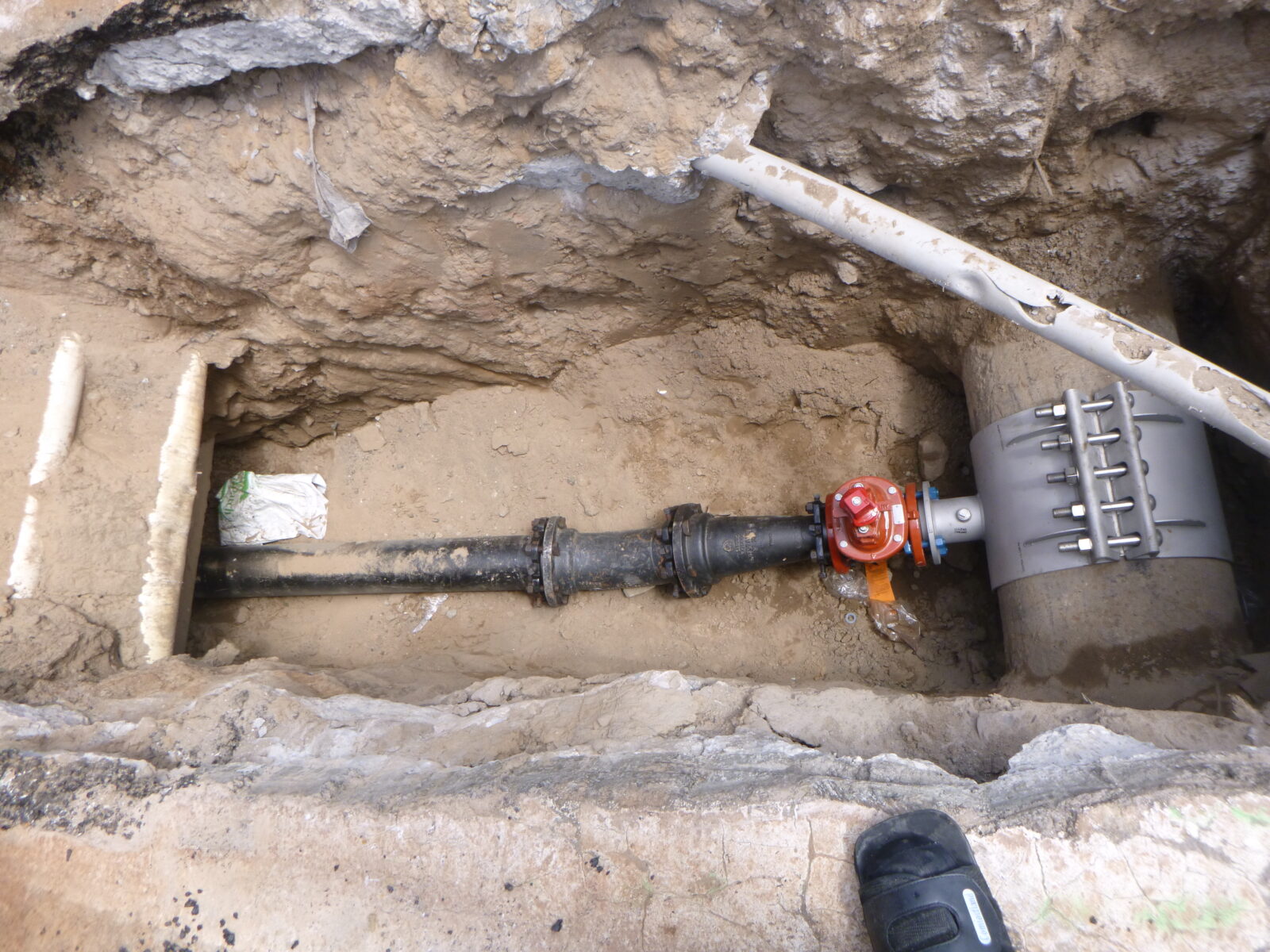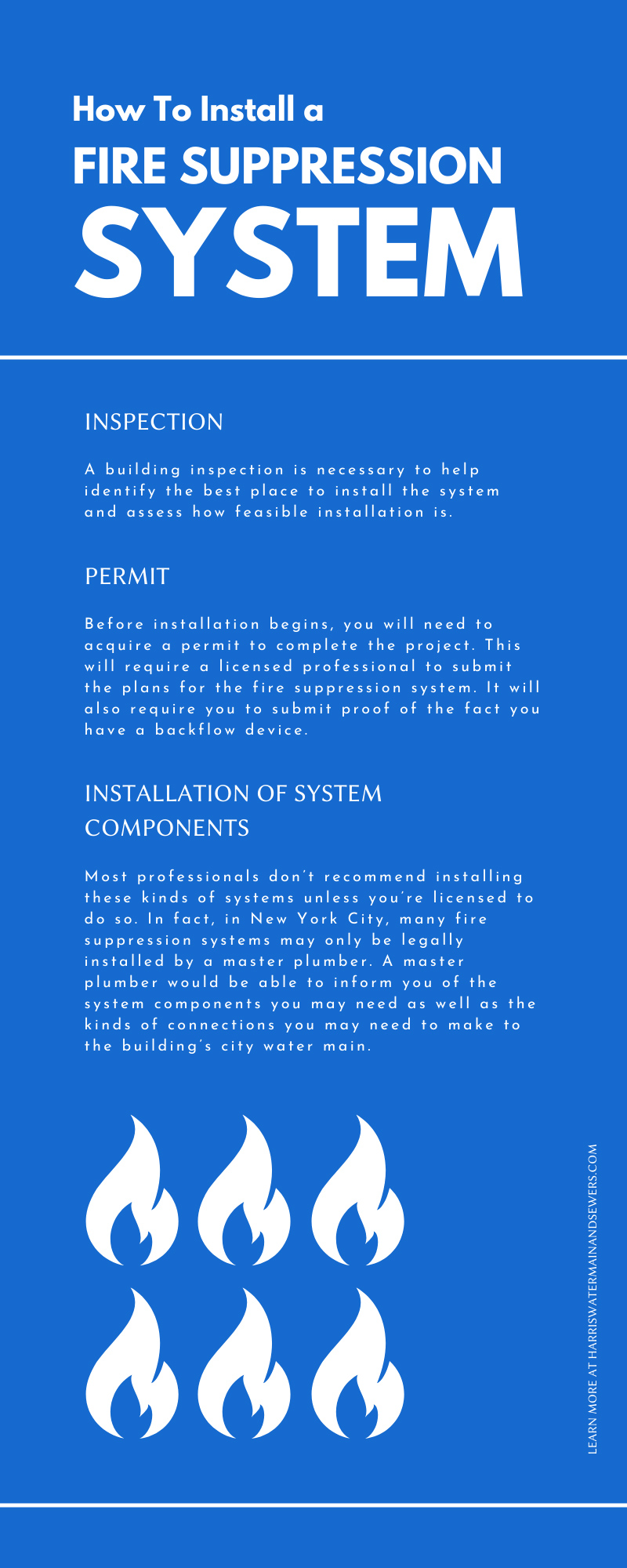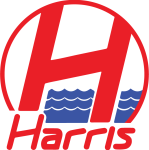Most of us have learned from a young age that you need to have water to put out a fire. That’s why sprinkler systems come standard in most commercial buildings. However, there are circumstances where a bucket of water will not actually help put out a flame. In these cases, water may even make the fire much worse.
For places that are prone to these types of fires, it’s imperative that property owners are well-versed in how to install a fire suppression system.
What Is a Fire Suppression System?
As the name suggests, fire suppression systems are used to quell fires without the use of water. These systems are available in a variety of classes that are all built differently to stop different types of fires.
Certain Types of Fires Suppression Systems Are Built To Stop
Fires are broken down into five different categories. Only class A fires can be extinguished with water. These are the most common fires in which solids like wood and paper become ignited. The other four varieties of fires are:
- Class B: Fires involving flammable liquids
- Class C: Fires involving electricity
- Class D: Fires involving metals
- Class K: Fires involving cooking liquids like grease
These classes of fires cannot be extinguished by water. For class B fires, water may cause the flammable liquid to spread further. Water conducts electricity, which would create a dangerous situation in the case of class C fires. Metal igniting is very rare, but water may cause the metal to ignite in those situations.
In the case of grease fires, the issue is that the density of oil is lower than water. When you put water on a grease fire, the flame tends to rise to the top, and the water remains submerged in the oils, which are twice its boiling point, eventually causing it to burst.
Fire suppression systems are designed to tackle these classes of fires the way a sprinkler system would handle a class A fire.
Classes of Fire Suppression Systems
Chemical Foam Suppression Systems
Foam fire suppression systems combine water with a foaming agent made up of chemicals, such as sodium alkyl sulfate and perfluorooctanesulfonic acid. When these two substances combine, they create a mass of foam, which helps suppress the fire.
As the foam covers the fire, it helps cool the area while removing the flame from its source of oxygen, effectively smothering it. This is what putting water on fire does as well, but foam has a lower density than water, preventing some of the problems associated with class K fires.
Foam Deluge System
A foam deluge system operates on the same principles as a foam suppression system. The difference is the scope it reaches. Foam suppression systems typically target fires in contained areas. For instance, it may point its nozzles over a stovetop or grease trap. A foam deluge system is designed to flood an entire area with firefighters’ foam.
This is ideal in environments where large class B, D, or K fires can get out of hand quickly, such as in large warehouses, factories, or airplane hangars.
Pressurized Gas System
While foam is an effective means of quelling most types of fire, it isn’t a viable option for all of them. Because foam still contains some liquid, putting it on an electrical fire can be dangerous. In these cases, you need a way of cutting off the oxygen supply to a fire without using liquid.
Pressurized gas systems are the way to accomplish this feat. They flood the area with a gas such as CO2 to displace the oxygen in the space. This is especially beneficial in areas where water or flooding may damage property in the area. However, it can become dangerous if the area has people in it. Fortunately, developers have found new materials to replace these gasses that are safer, such as imergen.
Steps for Setting Up a Fire Suppression System
Once you know what type of fire suppression system will best serve your purposes for your home or business, you can begin to follow the steps for setting up a fire suppression system.
Inspection
A fire suppression system must be designed for the space it will protect. This includes assessing the shape and scope of the room as well as the location of water pipes within the building. This is especially important for systems that use water, such as foam suppression systems. A building inspection is necessary to help identify the best place to install the system and assess how feasible installation is.
After installation, you will also want to ensure inspections of the system itself occur regularly. An annual inspection will help keep the building up to code.
Permit
Before installation begins, you will need to acquire a permit to complete the project. This will require a licensed professional to submit the plans for the fire suppression system. It will also require you to submit proof of the fact you have a backflow device. A backflow device is essential for any system that uses water, including foam systems. These devices prevent the contamination of outside water sources that occur when water backflows after a fire suppression system is utilized.
Installation of System Components
Most professionals don’t recommend installing these kinds of systems unless you’re licensed to do so. In fact, in New York City, many fire suppression systems may only be legally installed by a master plumber. A master plumber would be able to inform you of the system components you may need as well as the kinds of connections you may need to make to the building’s city water main.
How long a system takes to install depends entirely on the system itself. Simpler systems may take as long as four hours to install, but more complicated systems, such as those requiring separate connections to different rooms, may take as long as 16 hours.
Whether you’re trying to install a new foam deluge system for your warehouse or are looking for a fire sprinkler repair service for your home, Harris Water Main and Sewer is ready to fill your needs. With our 100 years of service working for the five boroughs of New York City, we can install or repair a system on any New York property.






















